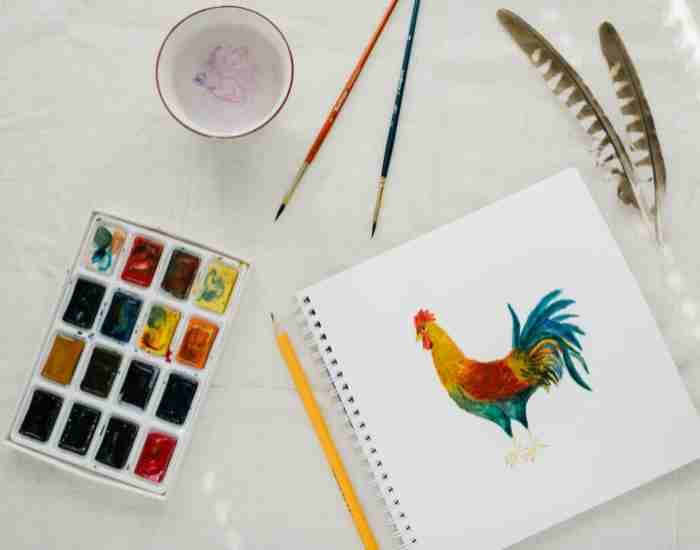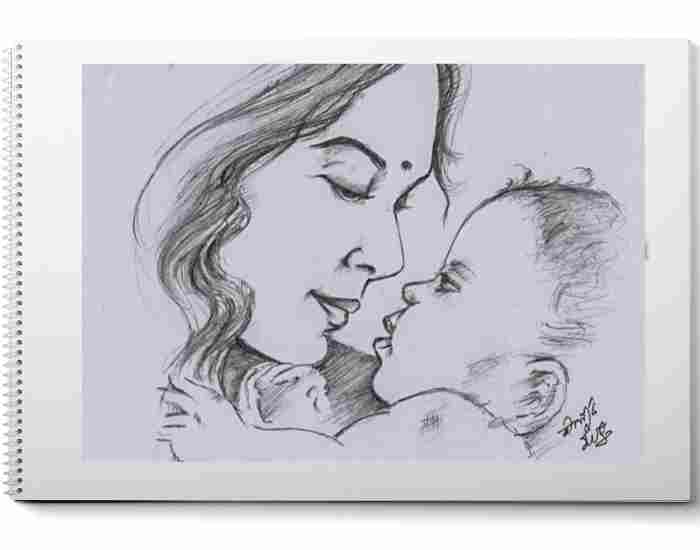Culture may be defined as the language, values, beliefs, and food customs shared by a people and which guides their behavior. Heritage refers to the accumulated cultural traditions, objects, and practices that are passed down from family members to their descendants. In regard to artistic expression, culture and heritage greatly affect the creation, interpretation, and valuation of art.
More specifically, the visual arts, music, and literature produced within a particular culture are an expression of its faith, values, and normative behaviors. And because different cultures and societies have unique experiences and identities, art is often a blend of stories and contexts. It is this relationship between culture, heritage and art which also influences the production of art and its perception and appreciation in various societies.
Importance in Artistic Expression
The concept of cultural identity and heritage greatly influences artistic expression in that it serves as an excellent feel upon which the artist can aspire to create. Cultural identity is a source of social inclusion and makes it possible for an artist to make a self-exploratory where he or she integrates with the community. On the other hand, heritage which comprises historical and traditional aspects serves as a pool of tools, topics, and aesthetics that will influence the artistic works.
The art and culture of a community can be paramount for its wellbeing and recognition. This is exemplified by the use of art itself, as traditional crafts, music or paintings are able to be deeply resonating at a sentimental level. When cultural stories are incorporated into art pieces or works, they can help bridge together a community by promoting harmony, understanding and exchange.
The Conflux of Culture and Art Practices
Artistic forms and practices are greatly influenced and sculpted by politics and other key historical occurrences. Significant events in history including wars and colonization shifts thematic scope for various art forms along with its materials, which in turn impacts artistic expression. In addition, societal norms and ideologies have a choke hold over the kind and scope of art that is produced, which is again cyclical.
All of that has been represented by the European art evolution during the renaissance era– a detailed focus on humanism that garnered appreciation from society due to its willingness to form empirical observations. During this time period, the likes of Michelangelo and Leonardo da Vinci came into the limelight as their work embodied the ideals the society was striving for. Such periods of evolution ultimately help in ushering a new era for other avenues of art.
Comparatively, Modern art of the 20th century was a byproduct of the shifting dynamics within society and rapid advancement in technological tools and machines. The Dadaism and Surrealist movements for example, ditched the set aesthetic conventions of art and instead embraced an array of approaches and fresh thinking ideas to the turmoil of the time, which in itself was an invention.
Important Culture Influencer in Art – Case Studies
The First Example: The Renaissance and The Contribution of Italian Culture Towards Modern Art
Italy during the Renaissance was a country revitalized and returned back to its roots, during this era, the region experienced radical changes in both art and culture. Italy was home to a number of influential artists such as Leonardo da Vinci, Raphael, and Michelangelo who popularized the techniques of linear and chiaroscuro perspective. Those artists not only formulated the aesthetic aspect of the Renaissance but also determined the basic elements of the identity of modern art.
Example 2: Japanese Art and Its Historical Context
Japanese woodblock prints such as ukiyo-e and ink wash paintings such as sumi-e can trace their history back to Japan’s heritage and value system, adds an authoritative touch to this paper. The woodblock prints that came into fashion during the Edo period spoke of common social themes, natural sceneries and kabuki actors that offers a glimpse of the Japanese civilization culture and love for nature. Japanese type of art has had an impact on fine arts in some parts of the world such as the paintings done by Van Gogh and Monet who used Japanese art traditions in their works of art.
Cultural Heritage as an Inspiring Source
Combining historical artistic heritage with present day creative performance is made possible through the existence of cultural legacy. This amalgam more often than not leads to new modes of expressions, which acknowledges the past but is comfortably able to work with today. Artists often apply traditional styles, designs and raw materials in their projects forging a link between yesterday and today.
It has been observed that for example, the field of digital art has taken on traditional forms and merged them with other types to create a more engaging experience. For instance, an artist may alter classic themes using digital technology, or blend historical characters into modern digital art forms in order to demonstrate the cultural history’s influence on contemporary art.
زويا: indigenous art : sculpture in this example inuit and current landscape
Art by the Inuit, like sculpture in the Inuit style, portrays an ancestral narrative that is imbued with cultural significance. As accustomed to creating, carving Inuit sculptures, Inuit artists create social and cultural stories in the work produced. Modern installations by Inuit artists commonly use animal figures or spiritual metaphors but do not avoid contemporary issues. The dovetailing of tradition, which often includes narrative portrayal blending, equally testifies to the changing characteristics of the tradition in artistic expression.
سويا: cultural festivals as contemporary art representation argument
Cultural diversity and contemporary art have been greatly influenced and nurtured by the cultural festivals. Biennales in Venice and the Edinburgh festival fringe are important in that they showcase the work of artists from many different cultures and address a global audience. Within those events, cultures are celebrated, and international interactions are encouraged, which results in the blending of traditions and artistic styles. This cultural intersect and interaction attendant to the cultural festivals further new s artistic development and appreciation of cultural assets.
Ways in Which Culture Influences Art Forms
Cultural figures and artistic themes are intrinsic parts of any work of art. They are unique to the specific culture and act as a narrative of that culture and so featuring them in art form helps in the storytelling of that culture. Remembering a symbol tends to be very important in multiple art forms and for this reason, the symbol holds meaning and significance to the cultural context with which it is associated.
African tribal art depicts the relationship of cultural elements and art forms effectively. Geometric, abstract, and bright colors are the features of these type of art forms, each design having great significance. The masks and the sculptures in the African art. smell of a Spanish and Italian cuisine. are not mere ornaments but are symbols. They depict ancestral spirits and divinities and are utilized alongside cultural customs and metaphysical activities. Take for example the Baule masks from the Ivory Coast. They are wore in initiation ceremonies which calls onto the ancestors to be present.
African art researchers explain that these icons are dynamic and are adjusted to fit novel contexts yet their meanings remain still. The symbolism of these images provide evidence to substantive social systems, religions, and experiences of the African populace as noted by the African Vodun Museum. Even today, the use of these symbols in art remains prevalent and creates a lasting influence on the world of cultural patterns.
Global Perspectives:
Taking a global view of artistic expression shows that the art milieu has been endowed with the talents of different ethnic groups which overall makes art global. From each civilization, there are these art forms, tools, and visions that add one more dimension to the global art portrait. Dissimilarities of cultures promote social interactions, strengthen interactions in society, and add value to art appreciation around the world.
Eastern art has had a significant effect on the development of artistic movements in the Western world, and that is best seen in the eastern influences in the western modern art. Japanese woodblock prints and Chinese brush painting have had a considerable impact on western modern art. The Aesthetic movements in Japan for instance, were greatly affected by the European Impressionists and Post-Impressionists, art movements which were influenced by Japanese art. Jean-Auguste-Dominique Ingres was among the artists who were altered with the compositions and colors of prints, and Japanese prints did this. The integration of these traditions is best exemplified in the use of asymmetric composition and flat color planes in western artworks.
Such artistic exchanges are not uncontextual, loss of cultural identity is also a critical factor in exchange these cultures. Artists change, and so do the nations, and when these nations start interacting with each other, art begins to evolve into more hybrid forms. Such an approach not only expands the understanding of the artists but also the engagement with various forms of culture.
Rewritten: African Tribal Art and It’s Meaning Towards Culture
African Tribal art is a classic example of how cultural symbolism and roots can aid in developing artistic styles. Over 3,000 tribes of Africa are distinguished by their own artistic styles, designs, and patterns of great significance. Specifically, the Yoruba tribe in Nigeria has beadwork and carved deities and spirits on wooden sticks. Fabrics from the Kuba tribe in the Democratic Republic of Congo use geometric designs that show the wearer’s status and ancestry.
The Africa Art Museum’s statistical records state that these art practices are deeply rooted to the culture and are still present to today’s art scene. It is estimated that 40% of the art sold worldwide has African roots and motifs which are a demonstration of relevance.
Annotation: The impact that Eastern culture had on Western cultures vividly illustrates the modernist perception that transcends Eastern influences as a purely Western construct.
Example 2: Eastern Influences in Western Modern Art and Artists’ Creative Expression
It has to be understood that exchange of Eastern elements with Western culture have historically changed the perception of modern art. In fact, the incorporation of Japanese Aesthetics into Western art during the late 19th century can be traced back to eastern influences. The term Japonisme describes the importation of Japanese art into the western world which was then assimilated into the works of western artists.
For example, Claude Monet’s collection of water lilies owes a debt to the calm and peaceful nature of Japanese gardens. In the same range, Van Gogh’s experimentation with color and brushstroke is attributed to Japanese wood block prints. At the same time, the amalgamation of these eastern methods into the Western context aided the genesis of post impressionism and expressionism movements.
**According to the data from The Museum of Fine Arts, Boston, expansion of eastern artistic traditions and their inclusion into Western modernism widened possibilities and boundaries for creative expression. For instance, over 25% of western modernist art collections contain eastern motifs thus asserting the significance of cultural amalgamation in the contemporary art setting.
Preservation of Cultural Heritage
Challenges and Solutions: Examine Practices That Aid in Cultural Heritage Preservation and Such Practices as Cultural Appropriation Ever Since the Merging of Their Traditional Art Forms
The retention of cultural aspect is not a straightforward task as there are hurdles like cultural appropriation, violence, amalgamation or disrepute that stand in the way. Cultural appropriation is one of them and it involves taking aspects of one culture to another without proper grasp. This cultural practice has a history of blurring the original complex meanings attached to cultural symbols ultimately exploiting them as well.
Many a time popular culture, such as art, will politically appropriate traditional art forms, ignoring the cultural and social significance of them. Using a Native American headdress or an African tribal mask as a fashion accessory denies them the unique spiritual and ceremonial purposes they have.
Equitable recovery is of paramount importance n maintaining traditional forms of art. It entails making sure that the people who belong to those communities are also involved in the preservation and the people know about them. Some measures aimed towards squelching appropriation and aiding equitable recovery include legal safeguards for traditional knowledge and fostering partnerships with cultural bearers. The World Intellectual Property Organization stands at the forefront of this fight, advocating for countries to take measures to protect cultural items from illegal trade, such as creating legal measures that protect the intellectual property rights of indigenous people.
Data collected by the International Council on Monuments and Sites during the year of 2022 finds that close to 30% of culture is at a risk of being lost because of globalization and cultural appropriation. There are many ways to combat such issues such as policy making, engaging with communities and working with other nations.
Success Stories:
Example 1: Protecting Cultural Heritage and Encouraging Appreciation of Culture By UNESCO
UNESCO is the main force behind the initiative the Convention for the Safeguarding of the intangible cultural heritage, this initiative allows for the inclusion of dance or music or oral traditions which serve as strong forms of identity for people of world.
It further, lists elements of intangible culture for special attention so that they are not only preserved but also appreciated and renewed, such as, Gion Matsuri in Kyoto, Japan and Tango in Argentina which are both intangible heritage masterpieces. Such listings pave the way for their geater and wider appreciation.
As per UNESCO, in 2023 the number of items in the list standing at 600 from across the world, actively endorsing the preservation of their respective cultures. Such practices internationally goes a long way in respecting and safeguarding cultures from traditions.
Example 2: Grassroot Efforts in Protecting Traditional Indigenous Art and its Associated Storytelling
The community’s commitment and involvement are paramount in ensuring that the old forms of traditional art practices survive, like in the case of Bhutan, where the Zorig Chusum school works with the craftsmen and helps them develop an understanding of traditional thangka painting, which is a form of art that portrays Buddhist deities and which is regarded as highly sacred. The ultimate goal of this school is to teach and enhance the spiritually valuable skills of traditional art.
In India, too, pigmenting and painting clothes through Kalamkari, which is a dying art, has been sought to be revived by organizing Classes and educational sessions in the local areas. By this people engaged in Kalamkari are able to sustain their stories and earn some money through it.
**As corroborated by the Indian Ministry of Textiles, more than 1,000 craftsmen involved in Kalamkari have selflessly contributed to the revival of this type of art. All these are illustrative of the potential impact that community-based efforts can have in protecting cultural resources and heritage.
FAQs
What part does culture play in an artist’s work?
Culture impacts individuals in various ways and in this context, suffices to say that cultural identity constitutes a viewpoint, which also comprises beliefs, values, and historical experience, which Mr. Vponchkov defined as cultural meaning in details Vponchkov. As an instance, it is noted that Japanese art frequently portrays natural elements such as nature because of their connection to spirituality beliefs generated by Shinto and Buddhistic ideas, while African artistic traditions concentrate on symbolic representation in addition to the community’s rituals.
Can you give me a few instances of how heritage has affected modern art?
It is through the inclusion of old features within modern practices that heritage is able to shape contemporary art. As part of modern installations, Inuit sculpture use traditional shapes and methods. Ta moko, or Māori tattoos, have grown in popularity among those who practice modern body art and design that incorporates traditional concepts into a contemporary setting.
Why is preserving artistic heritage significant to people?
Artistic heritage preservation is essential for the enhancement of cultural pluralism so that the new generations are able to trace their sources as well as comprehend and admire their ancestors. It ensures the well being of societies through the promotion of identity citizenship or attributes in them and also guarantees continuity. Preservation of culture also enhances educational and developmental opportunities because many traditional arts are tourism oriented and community supportive economically.
How to Learn Art in a Cultural Environment?
Appreciation of art can be taken to higher levels by appreciation of such art in a historical or socioeconomic background. This can be done through analyzing the cultural context underlying the artists, symbols of their work, and customary practices that guide them. Also, seeking information, going to places of cultural activities and debates of art and culture increases their level of such appreciation.
Conclusion
Culture and heritage enhance art because in the absence of these two elements the many forms of art that can be created are narrow. They altered the manner in which art is perceived and created through inspiring. As long as international art is developing, the relationship between the traditional nuances and the modern ones would best art in the future.
Cultural considerations in art help to grasp the essence of art in all its diversity which helps bring in unity to art over the globe. Cultural inheritance activities remain important to ensuring existence of traditional local artworks that will enrich the global cultural space in the future. As society becomes more global, the understanding and appreciation for these cultural approaches will help nurture the art in all of its dimensions.
References
- UNESCO. (2023). Intangible Cultural Heritage UNESCO Website
- World Intellectual Property Organization (WIPO). (2022). Protecting traditional knowledge WIPO Website
- Indian Ministry of Textiles. (2023). Kalamkari Art. Indian Ministry of Textiles Website
- National Museum of African Art. (2022). African Art. National Museum of African Art Website
More Post



